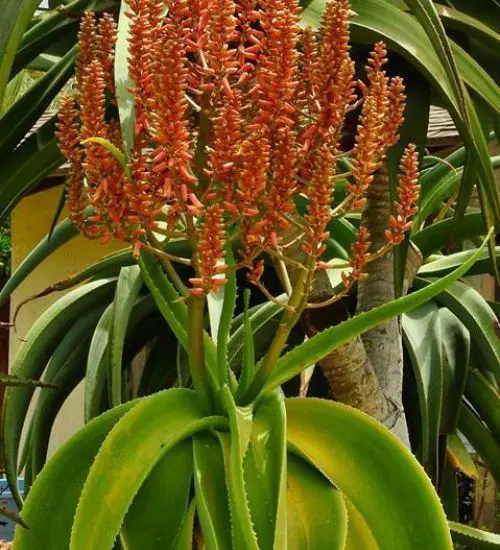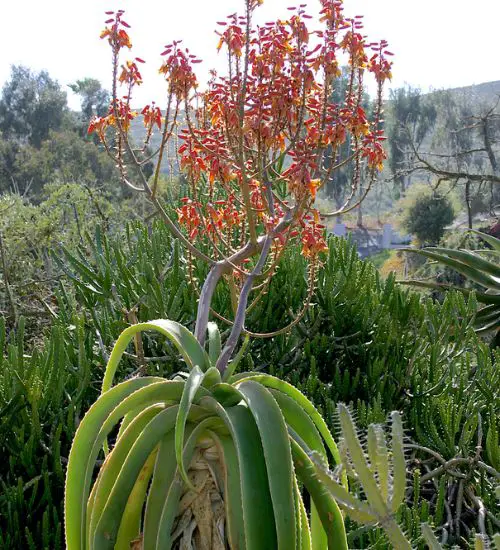Sun: full sun
Water: Typical water needs for a succulent
Temperature: Zone 9a from 20° F to 25° F (-6.7 ° C to -3.9° C)
Winter Survival: Not cold hardy
Propagation: cuttings, seeds
Flower: in the Fall and Winter
Flower Type: Yellow, Orange, pink - orange
Toxic: Generally non-toxic to humans and animals
Dormant: Unknown - Tell us
Space Requirement: Outdoors
Common Problems: No major pests, Plants may rot if overwatered
Basc Care for Aloidendron sabaeum
Watering
What you need to remember is that this type of succulents needs to be watered for every 2 weeks
You can water your succulent more than often in extreme conditions but make sure that the soil is completely dry before watering your succulent again.
Fertilizing
Only feed this succulent during its active growing seasons which means Unknown - Tell us. Use the right fertilizer applied in the right amounts. Applying half-strength balanced fertilizer every month or so is recommended for optimal results.
Do not fertilize during Unknown - Tell us as the plant is dormant.
Sun & Location Requirements for "Aloidendron sabaeum"
Aloidendron sabaeum requires full sun in order to thrive. When choosing a spot for your succulent, make sure it gets at least 6 hours of direct sunlight per day. If the leaves start to look pale or weak, this could be an indication that the succulent isn't getting enough light.
As per this succulent profile, it is only able to stay healthy when the environment temperature is above the range of zone 9a from 20° F to 25° F (-6.7 ° C to -3.9° C).
In order to ensure that Aloidendron sabaeum survives the winter, insulation and drainage are essential. A layer of mulch or gravel around the plant can help keep the roots warm during cold temperatures. Furthermore, avoiding exposure to wind and sun can reduce the risk of frost damage and promote longevity for your succulent.
Any succulents in the group will need a large space to grow. You should place your pot outdoor. Since this plant needs a lot of space than other succulents, you should consider not planting them together with other succulents/plants.
Propagation
One way to propagate Aloidendron sabaeum is by cutting
Growing Aloidendron sabaeum from seeds is an easy and economical way to produce more plants. Identify a healthy seed by its plumpness, dark color and slightly sticky texture. Once the potting mix has been pre-mixed with well-draining soil, sow the seeds evenly and press lightly into the surface. To ensure germination, keep the container in bright but indirect light and mist the soil gently with a spray bottle.
Toxicity

Aloidendron sabaeum is generally thought to be non-toxic for humans and animals. However, it is important to note that certain parts of the plant may contain toxins which can cause mild skin irritation if ingested or touched. For this reason, the plant should always be kept away from children and pets.
Pests and Diseases
Aloidendron sabaeum is not affected too much by common pests and diseases like most of the other succulents.


